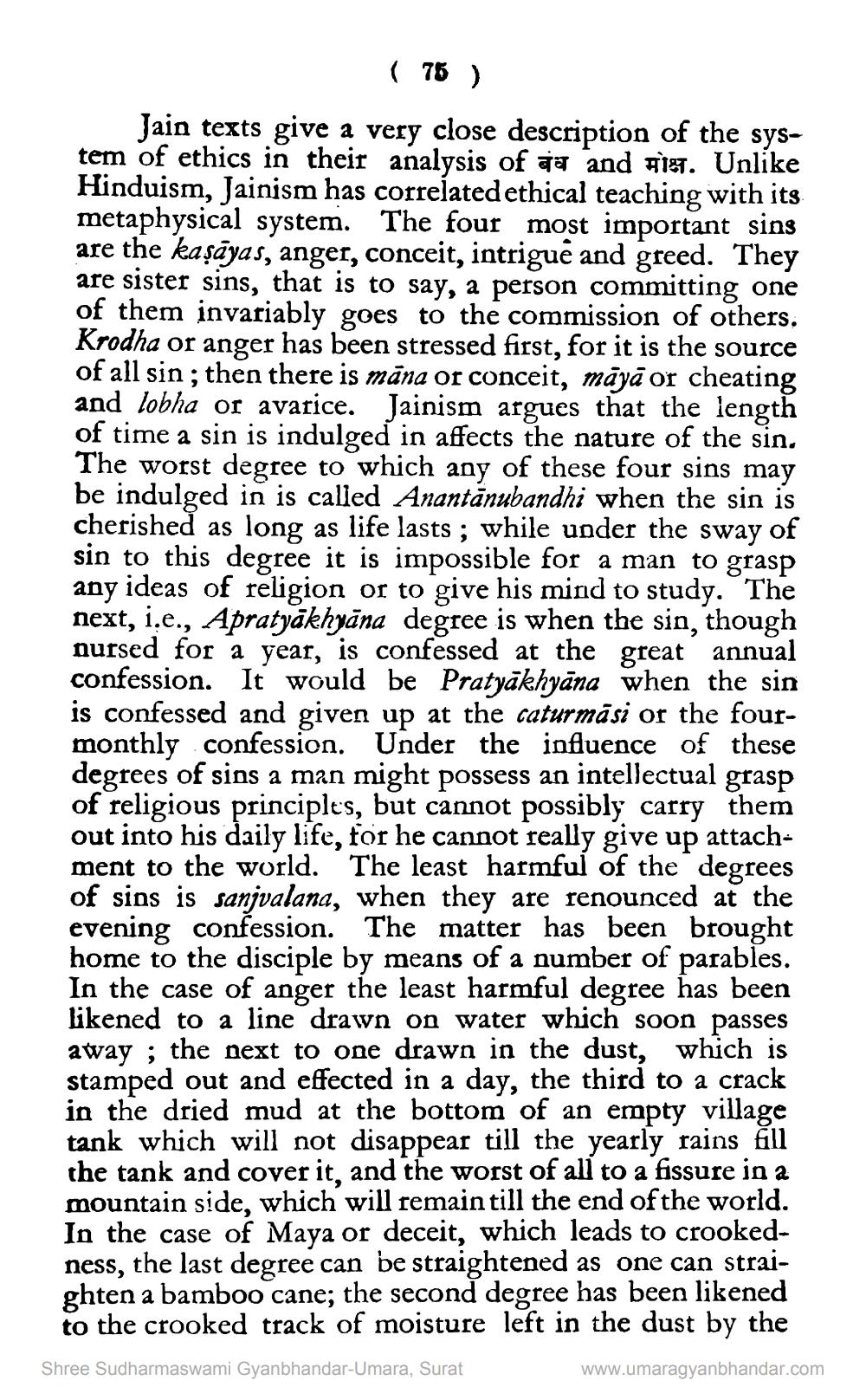________________
( 75 ) Jain texts give a very close description of the system of ethics in their analysis of aja and 18. Unlike Hinduism, Jainism has correlated ethical teaching with its metaphysical system. The four most important sins are the kaşayas, anger, conceit, intrigue and greed. They are sister sins, that is to say, a person committing one of them invariably goes to the commission of others. Krodha or anger has been stressed first, for it is the source of all sin ; then there is māna or conceit, mayā or cheating and lobha or avarice. Jainism argues that the length of time a sin is indulged in affects the nature of the sin. The worst degree to which any of these four sins may be indulged in is called Anantānubandhi when the sin is cherished as long as life lasts ; while under the sway of sin to this degree it is impossible for a man to grasp any ideas of religion or to give his mind to study. The next, i.e., Apratyākhyāna degree is when the sin, though nursed for a year, is confessed at the great annual confession. It would be Pratyakhyāna when the sin is confessed and given up at the caturmäsi or the fourmonthly confession. Under the influence of these degrees of sios a man might possess an intellectual grasp of religious principles, but cannot possibly carry them out into his daily life, for he cannot really give up attachment to the world. The least harmful of the degrees of sins is sanjvalana, when they are renounced at the evening confession. The matter has been brought home to the disciple by means of a number of parables. In the case of anger the least harmful degree has been likened to a line drawn on water which soon passes away ; the next to one drawn in the dust, which is stamped out and effected in a day, the third to a crack in the dried mud at the bottom of an empty village tank which will not disappear till the yearly rains fill the tank and cover it, and the worst of all to a fissure in a mountain side, which will remain till the end of the world. In the case of Maya or deceit, which leads to crookedness, the last degree can be straightened as one can straighten a bamboo cane; the second degree has been likened to the crooked track of moisture left in the dust by the Shree Sudharmaswami Gyanbhandar-Umara, Surat
www.umaragyanbhandar.com




